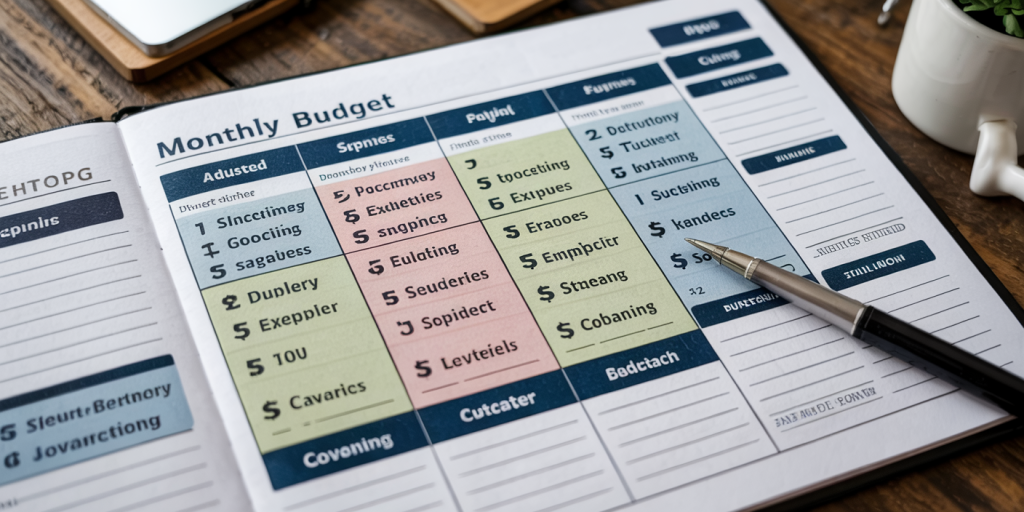How to Handle Financial Emergencies Without Panicking
Anúncios
Financial emergencies often strike unexpectedly, leaving individuals and families in stressful situations that demand immediate attention. These crises can stem from job losses, medical bills, urgent home repairs, or sudden economic downturns. According to a 2023 Bankrate survey, nearly 60% of Americans admit to not having enough savings to cover a $1,000 emergency expense, highlighting how common such predicaments are. Handling these financial shocks calmly and effectively is critical to overcoming them without long-term harm.

Remaining composed during a financial emergency is easier said than done. Panic can cloud judgment, leading to rash decisions such as taking costly payday loans or dipping into retirement funds prematurely. This article offers a comprehensive guide on navigating financial emergencies by employing practical strategies and maintaining a steady mindset, supported by examples, data, and actionable tips.
Anúncios
Recognizing and Assessing the Situation Calmly
When faced with a financial emergency, the first step is to recognize its true extent. Often, the initial anxiety obscures rational assessment, which can lead to overestimating or underestimating the problem. Taking a step back and objectively reviewing your financial standing is pivotal.
For example, consider Sarah, who lost her job unexpectedly. Instead of panicking, she listed all her monthly expenses, outstanding debts, and emergency savings. She realized that by cutting non-essential spending and negotiating a deferred loan payment, she could manage her finances for several months. This calm assessment helps avoid unnecessary fear and positions you to make informed decisions.
Creating a prioritized list of expenses is crucial. Essential payments such as rent or mortgage, utilities, and food should come first, while discretionary costs can be temporarily set aside. Additionally, understanding the source and amount of the emergency expense aids in planning your next moves. This structured evaluation helps in framing the problem realistically rather than emotionally.
Immediate Financial Measures to Take
Once the situation is assessed, quick yet calculated responses are necessary. Acting swiftly limits further damage but must be balanced with long-term thinking. Here are some practical immediate steps:
1. Contact Creditors and Service Providers: Many companies offer hardship programs or payment deferrals for customers experiencing financial difficulties. For instance, during the COVID-19 pandemic, many lenders waived late fees and allowed for payment extensions. Proactive communication can prevent penalties and buy time.
2. Utilize Emergency Funds: If you have a dedicated emergency savings account, this is the time to access it. Experts recommend having three to six months of living expenses saved for just these situations. Data from the Federal Reserve shows that only about 40% of Americans can cover a $400 emergency expense without borrowing, underscoring the importance of these funds.
3. Explore Income Sources: Temporary side jobs or freelancing can provide additional income in a pinch. For instance, after an unexpected medical bill, many turn to gig economy platforms like Uber or Fiverr to supplement earnings quickly.
Here is a comparative table illustrating possible immediate actions and their pros and cons:
| Action | Pros | Cons |
|---|---|---|
| Contacting Creditors | Allows for payment flexibility | May affect credit score if prolonged |
| Using Emergency Savings | Avoids debt and interest charges | Depletes safety net for future emergencies |
| Seeking Temporary Income | Provides immediate cash flow | May be limited by time and skillset |
Balancing these measures requires critical thinking and patience to avoid further financial strain.

Implementing Sustainable Budgeting and Expense Management
After stabilizing the immediate crisis, focusing on sustainable budgeting ensures long-term financial health and readiness for future emergencies. Budgeting is more than just tracking expenses; it involves re-evaluating priorities and making conscious choices.

Using the 50/30/20 rule as a guideline, where 50% of income goes to needs, 30% to wants, and 20% to savings and debt repayment, you can calibrate your budget to reduce unnecessary spending. In emergencies, shifting focus more heavily on needs and savings is advisable.
Mark recently faced significant car repairs that depleted his emergency fund. To recover, he restructured his monthly budget, cutting dining out and subscription services and increasing his savings contributions gradually. This reallocation allowed him to rebuild financial security without sacrificing essential needs.
Here’s a snapshot table comparing typical monthly spending before and after emergency budgeting adjustments:
| Category | Pre-Emergency Spend | Post-Emergency Adjusted Spend | Key Changes |
|---|---|---|---|
| Housing | $1200 | $1200 | No change |
| Utilities | $300 | $280 | Reduced energy usage |
| Food | $600 | $450 | More cooking at home |
| Transportation | $200 | $200 | No change |
| Entertainment | $150 | $50 | Canceled subscriptions |
| Savings | $250 | $500 | Increased by reducing wants |
This practical approach enhances financial resilience and restores peace of mind gradually.
Leveraging Assistance Programs and Resources
In many financial emergencies, outside resources can provide vital support if internal measures fall short. Governments, nonprofits, and community organizations often have programs designed to help those in distress.
For example, in 2023, the U.S. government allocated billions towards emergency rental assistance and food security programs. Additionally, nonprofit credit counseling agencies can guide debt management and financial education to prevent escalation of problems.
John and Linda, a couple facing unexpected medical expenses, accessed a local charity program offering temporary utility bill assistance, allowing them to free up funds for critical medical payments. This external support was essential in bridging their financial gap.
When considering assistance options, it’s important to compare criteria, benefits, and obligations. The table below summarizes common resources:
| Type of Assistance | Eligibility Criteria | Benefits | Drawbacks |
|---|---|---|---|
| Government Grants | Income-based | No repayment necessary | Varies by location and program |
| Low-Interest Loans | Credit check required | Manageable repayment terms | Adds debt |
| Nonprofit Counseling | Open to all | Expert guidance and education | Does not provide cash directly |
| Community Aid Programs | Based on need and availability | Immediate financial relief | Limited funding and eligibility |
Exploring these avenues strategically can alleviate immediate burdens and support long-term stability.
Avoiding Common Mistakes During Financial Crises
Handling financial emergencies without panicking also requires awareness of common pitfalls that exacerbate difficulties. Emotional reactions often lead to unwise financial choices.
One frequent error is relying on high-interest loans such as payday loans or credit cards without a clear repayment plan. According to the Consumer Financial Protection Bureau, payday loan borrowers typically repay double the amount borrowed due to exorbitant fees, which worsens financial woes.
Another mistake is neglecting to communicate with creditors. Many people fear disclosing difficulties, but silence usually results in penalties or damage to credit scores. A telling case is that of Tim, who ignored mounting credit card bills during a short-term job loss. His credit score plummeted, making it harder for him to secure housing afterward.
Lastly, overusing retirement savings in emergencies can jeopardize future financial security. IRS penalties and taxes often reduce the net benefit, and it leaves less money to fund later life stages.
To avoid these mistakes, maintain transparency, adopt a realistic repayment strategy, and seek professional advice when needed.
Preparing for Future Financial Emergencies
Looking ahead, building resilience against future financial emergencies is essential to reduce stress and economic vulnerability. The current environment, marked by inflation rates hovering around 5%, increasing healthcare costs, and unpredictable job markets, demands proactive planning.
One primary preparation strategy is bolstering emergency savings. Automating transfers to a designated account strengthens this habit and creates a buffer. Additionally, diversifying income sources can mitigate risk; freelance work, rental income, or investment dividends offer alternatives.
Financial literacy plays a critical role in preparedness. Separate studies show that individuals with higher financial knowledge are 30% more likely to have emergency funds. Regularly reviewing and adjusting budgets, insurances, and investment portfolios ensures alignment with changing circumstances.
Employers may also offer benefits like emergency loans or financial counseling. Taking advantage of such programs adds another layer of security.
A forward-looking mindset turns financial emergencies from traumatic events into manageable challenges, promoting confidence and well-being.
